Whenever I start a new piece of work, there’s always something that sets me off on the path of discovery, the thing that makes me think, ‘Oooo! That’s interesting, I wonder if…?’. In the case of this project it was a cluster of torc discoveries in a small area of Staffordshire that I noticed when I created a database of UK torc finds a couple of years ago.
This cluster has been partly (not all the Staffs torcs from this cluster have been included) previously recognised and there is an established theory in academia that two of these torcs – Glascote and Needwood Forest – are evidence of a localised manufacturing centre in Staffordshire. But I have to admit that I’m not convinced by this idea (I’ll leave the full discussion of that to a later blog, though).
Anyway, this cluster really came to the front of my mind during the recent research I carried out for the Knaresborough ring paper (which can be found here if you haven’t seen it). I was looking for other possible Viking thieved torcs, and there was something odd going on in a small area around Tamworth/Lichfield/Barton-Under-Needwood in Staffordshire where five torcs had apparently been deposited in a way that was not typical of the Iron Age. However, with no evidence of ‘nicks’ or other Viking finds, this cluster got put to one side to look at in further detail at a later date…and that date is now!
Following the initial ‘what’s going on here, then?’, the next stage in any piece of work is to track down the current location of the torcs, see if there are any photos and search for what has been written about them. Over the next couple of blogs, I’m going to go through this search for information for each torc in turn, discussing what we know, my initial thoughts and things that need looking at (often things that only a museum visit can attempt to answer).
First up is Alrewas… (one for the hive mind – how do you pronounce Alrewas? I say things in my head while I’m working and this one has me flummoxed, so if anyone knows please do tell me!)
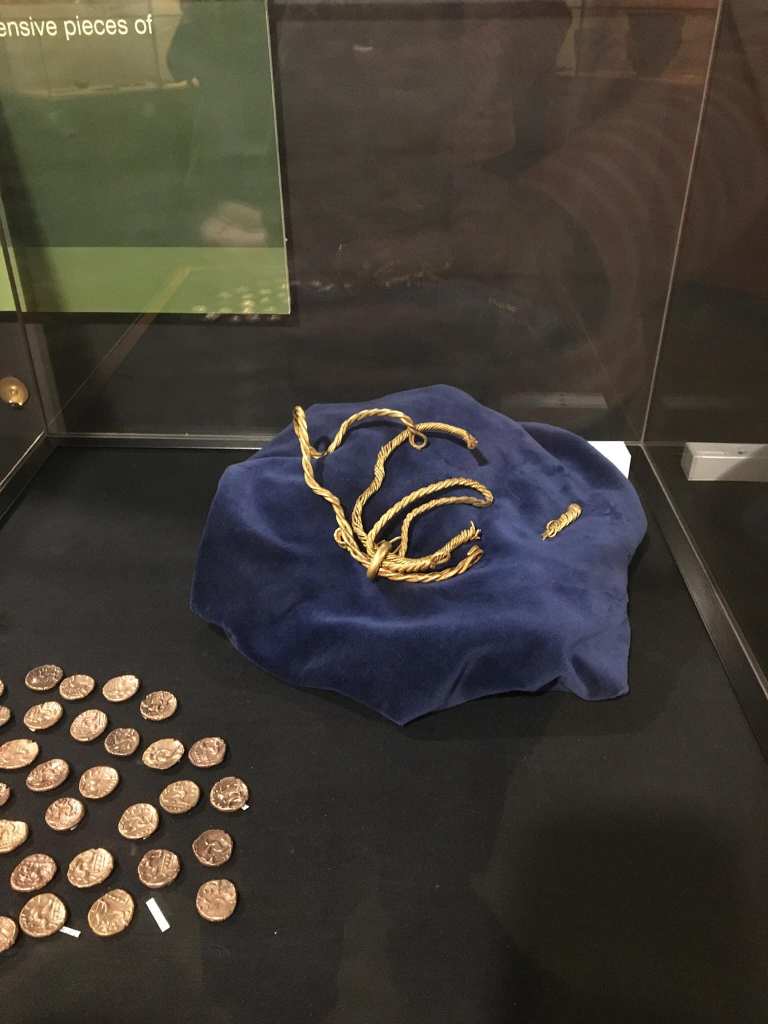
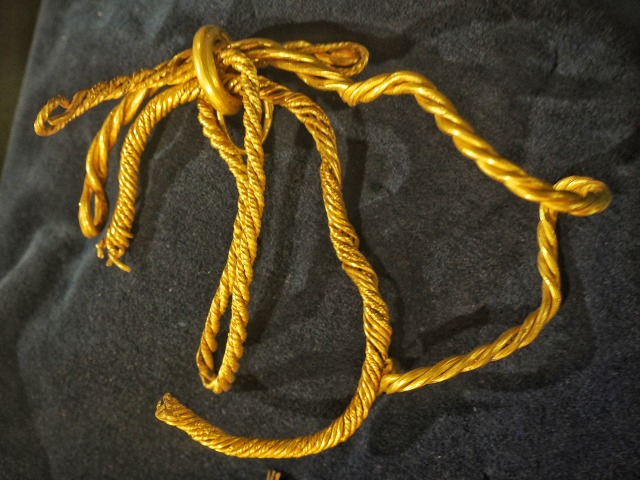
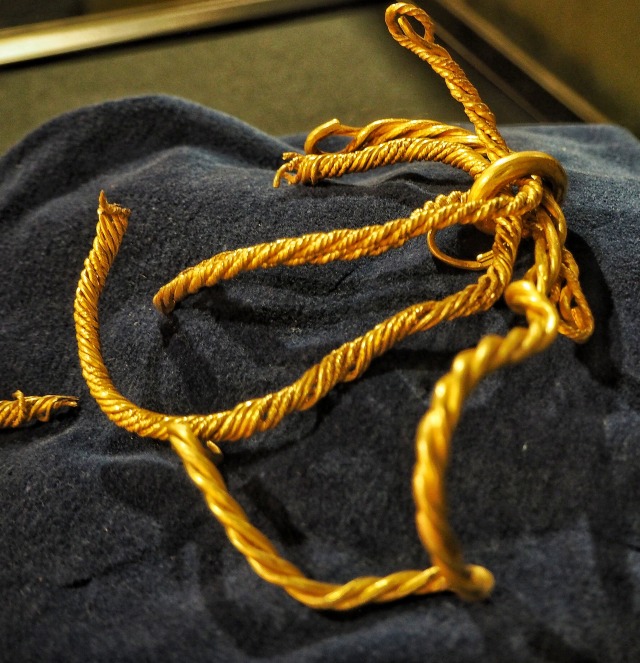
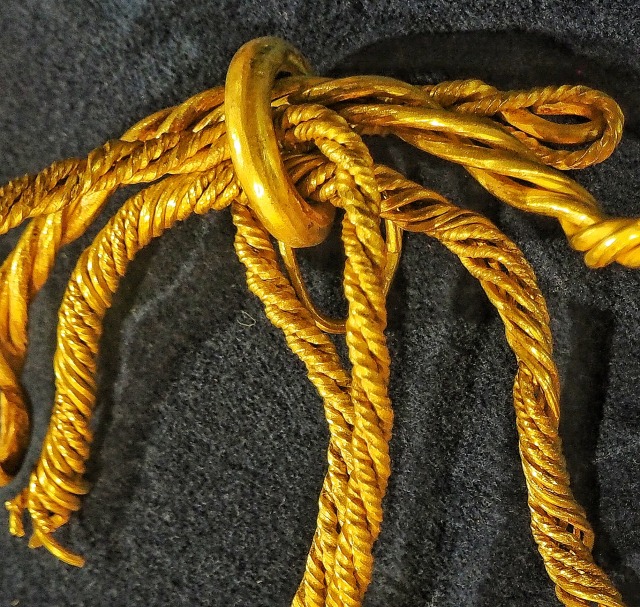
The first stage for me is to Google using terms like ‘Alrewas torcs’, ‘Alrewas torc’, ‘Alrewas Torques’ (sometimes this spelling is used), ‘Alrewas gold’ etc. From this I was able to glean that this unusual collection of gold torcs was found in 1996 by a metal detectorist. This always makes my heart sink – detected and antiquarian finds are almost always without much archaeological context, and don’t tend to get fully written about after they are found. But I shall persist.
From the Art Fund website I was able to establish that the torcs were declared Treasure Trove on 26th June 1996, and from a Portable Antiquities Scheme (PAS) report on the Leekfrith Torcs (also from Staffordshire) there was a mention that the torcs had subsequently been acquired by The Potteries Museum and Art Gallery, Stoke. A hunt of the Potteries catalogue gave me a museum accession number (the catalogue number museums use to uniquely identify each find in their collections). But apart from that, and a few photos, Google did not give me much.
A search of Heritage Gateway and the Historic Environment Record for Staffordshire gave a brief description and an approximate find spot. My search of various journals via UCL’s online library and other sources (including the Transactions of the Staffordshire Archaeological and Historical Society) suggested that the torcs had not been published, and apart from the Art Fund website which gives dimensions as ‘7 x 5 mm to 240 x 5 mm’ there really wasn’t very much to go on.
The torcs are also not on the PAS database (although this was always a long shot as they were found prior to the creation of the PAS). There is almost certainly a Treasure Report from 1996 written by specialists at the British Museum, but these reports are not easy to access. There is, however, one fuller description and measurement of the torcs in a 2005 PhD thesis by Hélène Hautenauve, ‘Les torques d’or du second âge du fer en Europe : techniques, typologies et symbolique‘, which is very useful. However, I’ve learnt over the years (and this really is no criticism at all, just a factor of different people’s interpretations, measurement methods or sometimes even typos) to use only my own measurements and descriptions of the torcs in any research I do.
For the moment, the best resources I’ve got to go on are the handful pf photographs from Google…and, as is so often the case, a photo sent to me by a friend, Ann Carson, who thought I’d be interested in a photo from her trip to the Potteries Museum (THANK YOU ANN!). Ann’s photo of the torcs in their case proved to be very useful as they show the torcs turned over and so offer a different, backside, view to the other photos I’d gleaned from the internet!
Initial thoughts from the primary research and photographs:
- The find spot of these torcs is unusual and would seem to be on flat ground not far from the River Trent. Torcs are usually found deposited on slopes or higher ground. Hmmmm…
- The bundling of the torcs is odd. Although similar clusters of material are seen from places such as Snettisham, I have never seen three torcs bound together like this. Several of the torcs seem to be complete, although there’s clearly damage to at least one and they’re all highly distorted.
- The wires used to make the torcs are both hammered round wires and square cross-section wires (that have been twisted to give a spiral effect): I’ve seen these wire types in torcs from Snettisham, East Anglia, on early torcs like the Grotesque torc and others from Snettisham that have cap terminals – like the one broken from the Alrewas torcs and visible in the museum case image above. Interestingly, one of the Snettisham Hoard F cap terminal torcs (third image below) shows a mix of square cross-section and rounded wire (a feature of one of the Alrewas torcs, remarked upon by Lily who was working at the Potteries Museum on a work experience placement in 2023 – well done, Lily!)
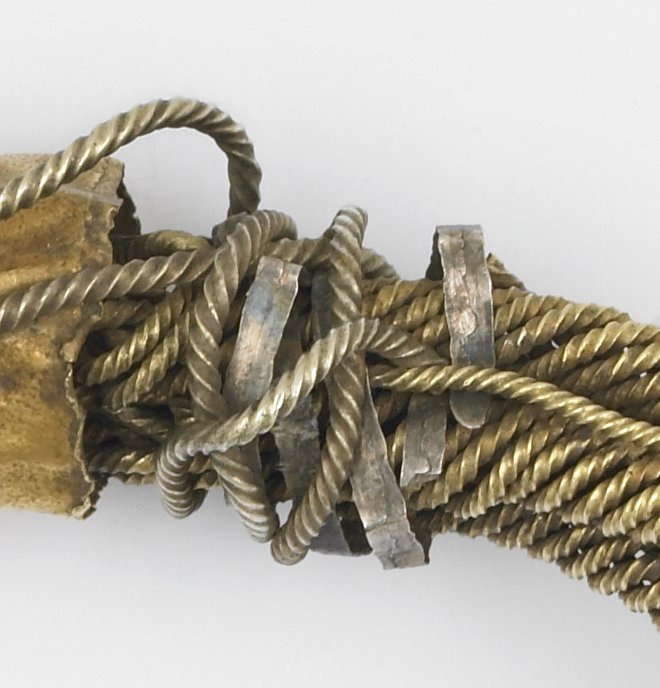
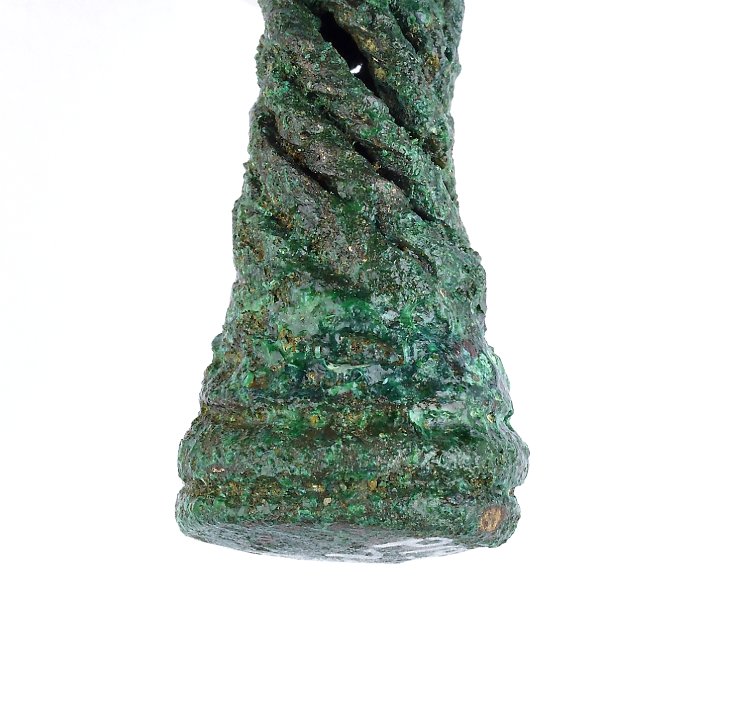

- There are both ring terminals and cap terminals in the Alrewas bundle, but an apparent absence of decoration in the ‘Snettisham Style’ (seen on the Snettisham Great torc and others), if taken into consideration with the wire types, could be a clue about date, or manufacturing origins.
- The ring which holds the torcs together is unusual. It appears to be almost perfectly circular (Hautenauve notes that it’s actually pennanular, i.e. a ring with a small break in the circumference). This shape is not a typical form in Iron Age gold torcs – it’s unlikely to be a reused torc terminal, which are usually slightly tear drop shaped or if it’s from a ring terminal torc, it’s been adapted – and hints that something unusual might be going on. In the words of Trix Randerson, who we wrote the Knaresborough Ring paper with, when I showed him the photos of the Alrewas torcs: ‘Oh bloody hell, yes that is weird!’
…and on that note, I’ll leave it there!
Next time, I’ll write about Middleton Hall, and perhaps Shenstone too, depending on how much flows from my teeny grey cells!
And remember, if you want to keep up to date with all the Staffordshire Torc Odyssey posts, then click ‘Subscribe’ at the bottom of this page. Thank you, and until next time, it’s good to torc!
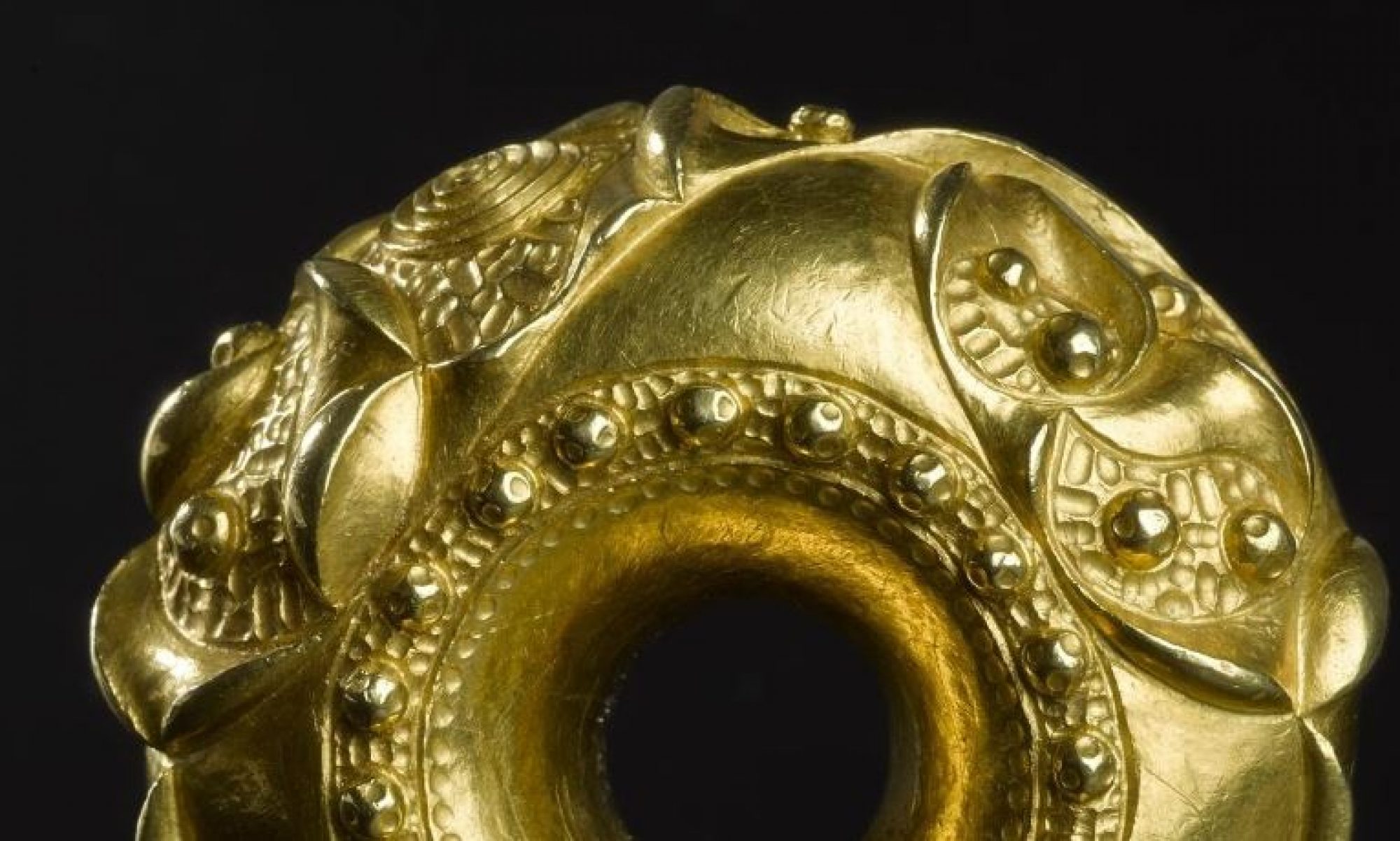
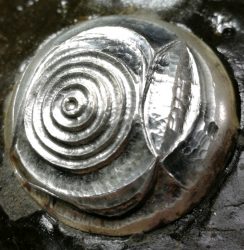

2 Replies to “The Staffordshire Torc Odyssey: 2 Alrewas”